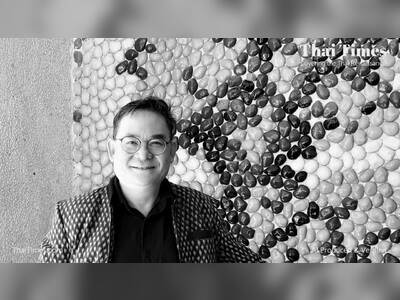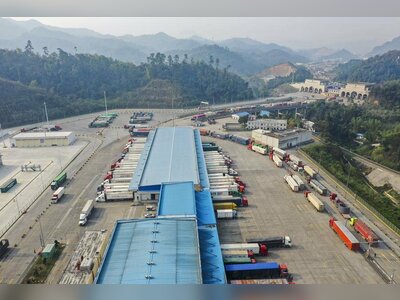Thailand’s Craft Chocolate Industry Grows Amid Sustainability Push
Small-scale Thai chocolate makers embrace bean-to-bar practices as cacao farming finds new life alongside traditional crops
Thailand is emerging as a niche player in the global craft chocolate industry, with small-scale producers and sustainable farming practices driving a modest revival of the country’s long-struggling cacao sector.
Although cacao was first introduced to Thailand in the early twentieth century, the country never became a major producer.
Government efforts in the 1950s to promote cacao as a cash crop yielded limited results, and by the 1990s, annual production had declined to approximately four hundred tonnes.
A renewed push in the early 2000s, which included the introduction of a hardier cultivar known as Chumphon 1, saw production temporarily rise to around one thousand four hundred tonnes per year.
However, the trend reversed as farmers turned to more profitable crops such as rubber, palm oil, and durian.
In recent years, rising domestic interest in high-quality, locally produced chocolate has led to a small resurgence in cacao farming and artisanal chocolate making.
Entrepreneurs such as Suradech Tiyachaipanich, who owns the Bangkok-based chocolate café Choch, have shifted from growing cacao to creating value-added products.
Tiyachaipanich began as a farmer but moved into chocolate production after struggling to find buyers for raw beans.
Other growers are also integrating cacao into diversified farming models.
Boonnum Phromchan, owner of Suriya Farm in Chanthaburi province, cultivates cacao alongside durian and mangosteen.
The year-round harvesting potential of cacao provides a more consistent cash flow compared to seasonal fruit.
Craft chocolate makers are emphasizing sustainable practices.
Daniel Bucher, founder of Pridi Cacaofevier in Bangkok, sources cacao from farms like Suriya that employ agroforestry techniques, growing cacao under the shade of larger fruit trees.
This reduces water consumption, as cacao naturally prefers shaded environments and requires more irrigation when grown in full sun.
The sustainability aspect extends to the culinary world.
Arne Riehn, head chef at one-Michelin-star restaurant Igniv Bangkok, uses Thai cacao in desserts and incorporates the entire cacao fruit, including the pulp and husk, in various preparations.
One of his desserts features a cacao juice sorbet made from the fruit’s outer flesh.
Despite these developments, Thailand’s cacao production remains small.
At its peak, the country produced fifteen hundred tonnes annually—a fraction of the output of major global companies.
By comparison, a single European manufacturer can use more than one hundred fifty thousand tonnes of cacao beans per year.
Nevertheless, the bean-to-bar movement continues to gain traction in Thailand, creating opportunities for sustainable growth in a market that remains dominated by large-scale producers abroad.
Although cacao was first introduced to Thailand in the early twentieth century, the country never became a major producer.
Government efforts in the 1950s to promote cacao as a cash crop yielded limited results, and by the 1990s, annual production had declined to approximately four hundred tonnes.
A renewed push in the early 2000s, which included the introduction of a hardier cultivar known as Chumphon 1, saw production temporarily rise to around one thousand four hundred tonnes per year.
However, the trend reversed as farmers turned to more profitable crops such as rubber, palm oil, and durian.
In recent years, rising domestic interest in high-quality, locally produced chocolate has led to a small resurgence in cacao farming and artisanal chocolate making.
Entrepreneurs such as Suradech Tiyachaipanich, who owns the Bangkok-based chocolate café Choch, have shifted from growing cacao to creating value-added products.
Tiyachaipanich began as a farmer but moved into chocolate production after struggling to find buyers for raw beans.
Other growers are also integrating cacao into diversified farming models.
Boonnum Phromchan, owner of Suriya Farm in Chanthaburi province, cultivates cacao alongside durian and mangosteen.
The year-round harvesting potential of cacao provides a more consistent cash flow compared to seasonal fruit.
Craft chocolate makers are emphasizing sustainable practices.
Daniel Bucher, founder of Pridi Cacaofevier in Bangkok, sources cacao from farms like Suriya that employ agroforestry techniques, growing cacao under the shade of larger fruit trees.
This reduces water consumption, as cacao naturally prefers shaded environments and requires more irrigation when grown in full sun.
The sustainability aspect extends to the culinary world.
Arne Riehn, head chef at one-Michelin-star restaurant Igniv Bangkok, uses Thai cacao in desserts and incorporates the entire cacao fruit, including the pulp and husk, in various preparations.
One of his desserts features a cacao juice sorbet made from the fruit’s outer flesh.
Despite these developments, Thailand’s cacao production remains small.
At its peak, the country produced fifteen hundred tonnes annually—a fraction of the output of major global companies.
By comparison, a single European manufacturer can use more than one hundred fifty thousand tonnes of cacao beans per year.
Nevertheless, the bean-to-bar movement continues to gain traction in Thailand, creating opportunities for sustainable growth in a market that remains dominated by large-scale producers abroad.











